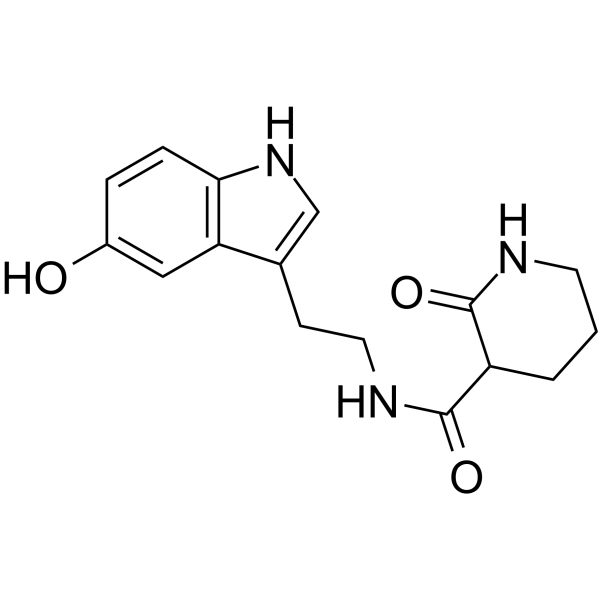314054-36-9
| Name | HIOC |
|---|---|
| Synonyms |
3-Piperidinecarboxamide, N-[2-(5-hydroxy-1H-indol-3-yl)ethyl]-2-oxo-
HIOC N-[2-(5-Hydroxy-1H-indol-3-yl)ethyl]-2-oxo-3-piperidinecarboxamide |
| Description | HIOC is a potent and selective activator of TrkB (tropomyosin related kinase B) receptor. HIOC can pass the blood-brain and blood-retinal barriers.HIOC activates TrkB/ERK pathway and decreases neuronal cell apoptosis. HIOC attenuates early brain injury after SAH (subarachnoid hemorrhage). HIOC shows protective activity in an animal model for light-induced retinal degeneration[1][2][3]. |
|---|---|
| Related Catalog | |
| Target |
TrkB ERK |
| In Vivo | HIOC (C57BL/6 mice, 50 mg/kg, IP, three times per week, for two weeks) increased survival of RGCs (retinal ganglion cells) after ONC (optic nerve crush)[3]. |
| References |
| Density | 1.3±0.1 g/cm3 |
|---|---|
| Boiling Point | 746.1±60.0 °C at 760 mmHg |
| Molecular Formula | C16H19N3O3 |
| Molecular Weight | 301.34 |
| Flash Point | 405.0±32.9 °C |
| Exact Mass | 301.142639 |
| LogP | -1.49 |
| Vapour Pressure | 0.0±2.6 mmHg at 25°C |
| Index of Refraction | 1.648 |
